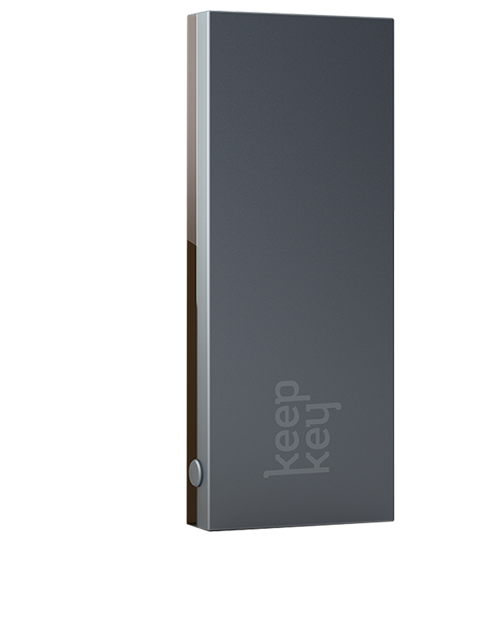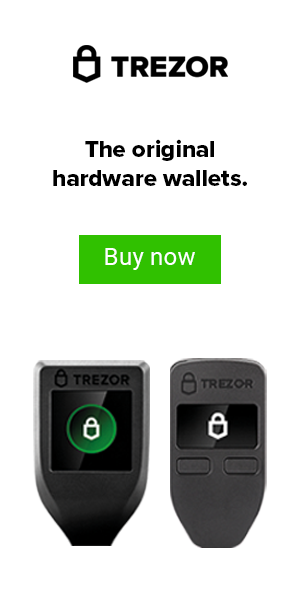You Might also like
-
CryptoSteel Capsule Review (2020) | Can It Withstand Acid! (PROOF)
Cryptosteel Review: 4 Things to Know (2020). On one side, innovation is enhancing as well as on the other side, hackers are getting smarter as well as much more powerful. The makers of Cryptosteel Capsule declare that you need their purse to stay risk-free, however is it truly worth a purchase? Let’s discover in this Cyrptosteel in our evaluation!
What is CryptoSteel Capsule?
Cryptosteel Capsule is a cold-storage steel purse that lets you keep sensitive info including Bitcoin personal secret. Nevertheless, in spite of what it sounds like, the purse is not only utilized to keep crypto-related info. You can likewise keep mnemonics sentence, banking passwords, and also Lastpass Master Password to make certain safety and security.
The cassette is claimed to be indestructible, making it an excellent alternative for customers that are worried concerning the safety and security of their individual details. The manufacturers assert the pocketbook to be unsusceptible to stress, acid, fire, and also deterioration. This stainless-steel pocketbook features inscribed steel floor tiles that make it very easy to prepare passwords.
The Basic Cryptosteel (beginnings at $79): This is the firm’s ideal marketing thing. It can hold 24 four-digit mnemonics complete, along with over 245 uppercase letter floor tiles. It additionally features empty floor tiles to promote 3-letter mnemonic words. At 455 grams, the pocketbook is fairly very easy to lug. 2 Pack Cryptosteel 2-Pack Bundle (begins at $145): This appropriates for customers that desire extra. It has 2 double-sided cold-storage pocketbooks.
Each of the cassettes can hold 24 four-digit mnemonics complete, along with over 490 uppercase letter floor tiles. It additionally features empty floor tiles to promote 3-letter mnemonic words. Given that it’s a 2-in-1 tool, it considers 910 grams. Letter Sets Letter Sets (beginnings at $25): You can acquire different letter readied to obtain the adaptability to support extra alphanumeric expressions and also mnemonic seeds. It has over 370 lowercase and also uppercase letters and also some empty and also unique personality floor tiles.
Each package features the firm’s one-of-a-kind product packaging that’s made by Akahira. In addition, you will certainly not have much of a trouble in including your password on the pocketbook. It features straightforward guidelines that are understandable.
Anticipate to invest concerning 45 mins the very first time you obtain your hands on it. As soon as you recognize just how it functions, you will certainly locate it very easy to access your password or make adjustments to the saved information.
Custom Engravings For Users Who Want More While I did not think much of this feature, the company appears to be pushing it heavily. You can get custom engravings to give your wallet a personal touch. It may be a suitable option if you intend to gift the wallet to a friend or if you own multiple devices. Custom engravings can help you label each.You may choose from available options or upload your own custom design. Unfortunately, custom designs are priced individually. You’ll have to get in touch with the company to know more about the associated costs.
What Kind of Protection Does CryptoSteel Capsule Offer?
The standard option comes with a total of 24 slots.
Each slot is able to hold 4 letters– this is all you need to recover the entire word from the BIP39 word list of 2,048 possible options. I did not personally run tests, I did see some YouTube videos that show the wallet being tested. It can bear extreme temperatures and will not sustain damage be it fire or water. In fact, it is fireproof up to 1200 ° C. Moreover, it comes with an unique Lifetime Satisfaction Guarantee. This was enough to convince me about the quality of the product. It feels sturdy in hand and I also liked the feel.
It’s as big as a credit card but much heavier. The level of protection is excellent. It doesn’t matter what the wallet has to go through, the letters will still be readable. While cold-storage wallets offer security against hackers, theft is still a possibility. In case you lose your wallet, you should first generate a new seed.
Plus, if you have Trezor or other such devices, you can add another layer of security by applying an additional password. Moreover, there is also the option to use a padlock to deter thieves. It can be bought separately.
Do You Need Cryptosteel Capsule?
Online security is a major concern. Most users are afraid of storing their private information on the web.
It may be a good idea to invest in Cryptosteel if you have made a large investment in digital coins. Since it is made of stainless steel, it can go undetected. You will have no difficulty in storing it, which is a great plus. Additionally, the company offers free international shipping ($ 150 or bigger orders). It also offers more security than writing down your mnemonic code on a piece of paper.
Plus, it’s compatible with Trezor, Ledger Nano S, and KeepKey. It might be a little on the expensive side, but it’s worth the price considering you will not have to replace it anytime soon due to it being very durable and long-lasting. Plus, there is no risk of a security breach since the entire process is offline. Packaging and Handling What is Cryptosteel?
Packaging and Handling Cryptosteel Capsule — Disadvantages Cryptosteel Alternatives Can you use Cryptosteel with Ledger and TREZOR Cryptosteel Capsule ? Cryptosteel vs Billfodl I was quite impressed when I first got my hands on the device. It looks quite neat and is easy to hold. However, remember to be careful when opening the package as it contains small items. You don’t want to lose anything. The artwork is quite impressive as well.
It gives the device an unique appearance. Cryptosteel Capsule — Disadvantages It can be difficult to store and sort out the tiles.
Plus, you can not use it to store BTC addresses or other such information as it does not come with numeric tiles. Also, some users complain about a lack of uniformity when it comes to tiles. I did not face such problems personally. If this is the case, you will have to manually polish the tiles to ensure they fit well. Having used and reviewed Cryptosteel, I can say it delivers what it promises. If you have invested big in cryptos, then it may be a good option to buy this wallet.
Cryptosteel Alternatives Alternatives to the Cryptosteel can be found in our post on CryptoSteel Vs. CryptoTag. Can you use Cryptosteel with Ledger and TREZOR?
Yes, Cryptosteel is compatible with the Ledger Nano S, Ledger Nano X, and both TREZOR models. Cryptosteel recently launched a new version of its wallet, called the Cryptosteel capsule.
One of the main benefits is that the word are not displayed directly. You have to open the capsule to see the words, making the Capsule slightly more discreet than the original Cryptosteel. Cryptosteel vs Billfodl There are two main differences between the Billfodl (read our Billfodl review) and Cryptosteel.
The Billfodl is cheaper and comes with faster shipping. Billfodl’s built with Marine-Grade 316 Stainless Steel, while Cryptosteel is built with basic 304 construction steel.
CryptoSteel Capsule Review: Final Verdict
Overall, I have used several metal recovery seed backups and this one is very unique. Over time, I have seen these devices become more clever and evolve from just a cassette that allows you to slide in 4 tiles for the first 4 letters of each individual recovery seed word. With options and innovations like this one, it’s worth the extra price, in my opinion. The form factor has evolved to not only make it more secure, but it is a lot more inconspicuous.
If you’re looking for something that has a lot more options for using keys and certain hash function and special characters that are related directly to the private key instead of the BIP39, then this is the only wallet you should consider. This really appeals to the “Veteran Crypto Users” that understand the technical of bitcoin and public key cryptography, and people that are tech-minded like myself.
If you fall into one of those spectrums of the crypto community, you can’t go wrong!
What do you think? Are you going to try out the new CryptoSteel Capsule? Let us know in the comments below.
Cheers,
The Crypto Renegade
NOTE: This post may contain affiliate links. This adds no cost to you but it helps me focus on giving as much value as possible in every single post by being compensated for recommending products that help people succeed.
Post Views: 0














